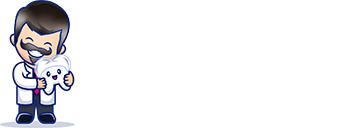When people start thinking about straightening their teeth, one of the first questions that comes up is this: is Invisalign cheaper than braces? Both options fix the same problems, but the price can vary depending on a few things.
Invisalign uses clear, removable trays, while braces rely on metal brackets and wires. Some think Invisalign must cost more because it looks more modern, but that’s not always true. The total cost often depends on how much work your teeth need, how long the treatment takes, and who your orthodontist is.
If you’re trying to choose between the two, it helps to look at what each one includes and what you might end up paying for beyond just the treatment itself. At Dahar Orthodontics, we break it down in a way that actually makes sense—so you’ll know what you’re paying for, what to expect, and which option could be the better deal. No confusion, no fine print—just straight answers.
How Invisalign Works vs. How Braces Work
Before figuring out the cost, it helps to know how each treatment actually works. That way, when someone asks, is Invisalign cheaper than braces, you’ll understand what you’re really comparing.
Invisalign uses clear plastic trays, called aligners, that fit right over your teeth. They’re smooth, BPA-free, and made just for your mouth. You wear them most of the day, only taking them out to eat or brush. Every week or two, you switch to a new set that keeps your teeth moving bit by bit. Since there are no wires or brackets, most people find Invisalign more comfortable.
Braces work differently. They use metal or ceramic brackets that are glued to each tooth. A wire connects the brackets and gets tightened every so often to guide the teeth into place. Braces are usually the go-to option for more complicated cases, especially when teeth need a lot of shifting.
Both methods can give great results—it just depends on what your teeth need. The key is knowing how each one works, so when you look at the price, it’s a real comparison and not just a guess. Each system has its own pros, and the right one isn’t always about the lowest number.
Typical Cost of Invisalign and Braces in the U.S.
Invisalign Cost Range:
- $3,000 to $7,000 total
- Price depends on:
- How long treatment takes
- How complicated your case is
- If you need extra features (like attachments)
- The experience level of your orthodontist
Braces Cost Range:
- Metal braces: $3,000 to $6,000
- Ceramic or clear braces: $4,000 to $8,000
- Ceramic looks more natural, but usually costs more
Why Do Prices Vary So Much?
A few key things make the price go up or down:
- Treatment complexity – Bigger corrections usually cost more
- Time involved – Longer treatment = higher cost
- Orthodontist’s experience – Specialists with more training may charge more
- Where you live – Urban areas often have higher prices than small towns
Knowing these numbers helps you compare without guessing. Just keep in mind—it’s not always about picking the cheapest option. It’s about finding what fits your teeth, your budget, and your goals.
7 Factors That Affect Overall Treatment Costs
A big part of answering is Invisalign cheaper than braces comes down to the details behind your treatment. Not everyone pays the same, and these seven things can make a real difference in the final cost—no matter which option you pick.
- Severity of Alignment Issues
If your teeth only need small shifts, treatment is usually quicker and cheaper. But if you have crowded teeth, major gaps, or jaw alignment issues, expect the price to go up. Harder cases often mean longer treatment and more tools to get the job done. - Treatment Duration
The longer it takes to straighten your teeth, the more it costs. More months mean more aligners if you’re using Invisalign or more checkups and wire adjustments if you go with braces. Shorter treatment plans usually cost less overall. - Provider Fees
Some orthodontists charge more than others. This can depend on their experience, the tools they use, or even the area their office is in. A highly trained specialist might charge more, but they may also offer faster or better results. - Insurance Coverage
Some dental insurance plans cover both options. Others may pay more for one over the other. If your insurance leans toward braces or Invisalign, that could make your decision easier. It’s worth checking before you start treatment. - Follow-Up Visits & Adjustments
Braces usually need more in-person appointments for tightening and checks. Invisalign often needs fewer visits since many aligners are planned out from the start. Fewer visits could mean lower costs and less time off work or school. - Material & Lab Costs
Invisalign trays are custom-made using 3D scans and digital planning, which can raise the price. Braces use brackets and wires that are more standardized and often cheaper to produce. Materials matter when it comes to overall cost. - Emergency Repairs
Braces can break—wires might pop loose or brackets might fall off. Fixing those can lead to extra trips and extra charges. Invisalign trays don’t break as often, but if one gets lost, replacing it adds to the total bill.
Long-Term Costs: Retainers, Repairs, and Maintenance
Straightening your teeth doesn’t end when the treatment is over. No matter which option you choose, you’ll need a retainer to keep your teeth from moving back. Most people don’t realize this part adds to the final cost.
Retainers usually cost between $100 and $500, depending on the type and how many you need. Some orthodontists include them in the treatment price, but many don’t. So it’s smart to ask about that early on.
People using Invisalign sometimes need replacements more often. Since the trays are removable and clear, they’re easier to lose or damage. Every time a new one is needed, it can mean extra cost—not to mention a delay in treatment if it’s not replaced quickly.
With braces, there’s a different kind of upkeep. Wires can poke out, and brackets can break off if you bite something too hard. These small fixes might not seem like much, but if they keep happening, the repair visits can add up over time.
So when you’re asking is Invisalign cheaper than braces, don’t forget about the stuff that comes after. Retainers, repairs, and small surprises can make a difference in the long run.
Convenience vs. Cost: What Are You Paying For?
Some people wonder—is Invisalign cheaper than braces, or are you just paying extra for convenience? That’s a fair question, especially when the two treatments work in different ways.
Invisalign usually costs more upfront, but part of that comes from what you’re getting. The clear trays are removable, easy to clean, and don’t need as many office visits. For people with busy schedules or who care about how their smile looks during treatment, that’s a big plus.
Braces, on the other hand, stay on 24/7. You don’t have to think about taking them out or losing them. They’re often better for more complicated cases and usually start at a lower price. The materials used in braces also tend to cost less.
So the difference in price isn’t random. You’re paying either for time and flexibility or lower starting costs and strength—it just depends on what matters most to you.
When Invisalign Might Be More Cost-Effective
In some cases, Invisalign can actually be the more affordable choice. If your teeth only need small or moderate changes, treatment may be shorter—and that means fewer aligners and a lower cost overall.
It also makes sense for adults or teens who don’t want their treatment to be too noticeable. Since the trays are clear and easy to take out, they fit into daily life without much stress.
There are fewer surprises too. No broken wires or brackets to fix, and fewer office visits needed. Over time, those things can save both money and time.
So the final cost isn’t just about the treatment itself—it’s also about how simple the process can be.
When Braces Might Be the Cheaper Route
Braces often make more sense when teeth need major shifting. For serious crowding, bite problems, or jaw issues, traditional braces do the heavy lifting better.
They’re fixed in place, so there’s no risk of losing trays or skipping wear time. That can help keep everything on track without the need for replacements.
Metal braces are usually the least expensive option because they don’t come with add-ons like 3D scans or special trays. The materials are basic, but they work well.
So if your case is more complex or you want to stick to the lower end of the price range, braces may be the way to go for a more practical option.
Frequently Asked Questions
It’s normal to have questions when trying to decide which option is right for you. Here are some of the most common ones people ask when comparing the cost of Invisalign and braces.
- Is Invisalign covered by insurance the same way as braces?
In many cases, yes. Most dental plans that cover orthodontics will help pay for either option, but the amount can vary. Always check with your provider to see what’s included. - Which has more hidden costs—braces or Invisalign?
Braces can lead to more repair visits if something breaks, while Invisalign users might need to replace lost trays. Both can have extra costs, so it depends on how well things are handled during treatment. - Are there payment plans available for both treatments?
Yes. Most orthodontic offices offer payment plans to break down the cost into monthly payments, no matter which option you choose. - Can I switch from braces to Invisalign mid-treatment?
It’s possible, but not always simple. You’ll need to talk to your orthodontist to see if switching makes sense based on your progress. - Is one more cost-effective for teens vs. adults?
Not always. The cost depends more on the condition of the teeth than age. What works best comes down to the individual case.
Final Takeaway: Which Is Cheaper Depends on Your Situation
Some people go into treatment thinking the price will be the same for everyone, but that’s rarely the case. Is Invisalign cheaper than braces? Sometimes, yes—but only if your teeth need minor changes and you don’t run into extra costs along the way.
Braces often come out cheaper for more complex fixes or when you want a lower starting price. Invisalign may cost more upfront, but it can save time and visits. It really depends on your needs.
The best way to find out what works for you is to talk to a professional. Dahar Orthodontics can give you a personalized quote based on your smile and your goals. No matter what you choose, both options can lead to the same great result—a healthier, straighter smile.


